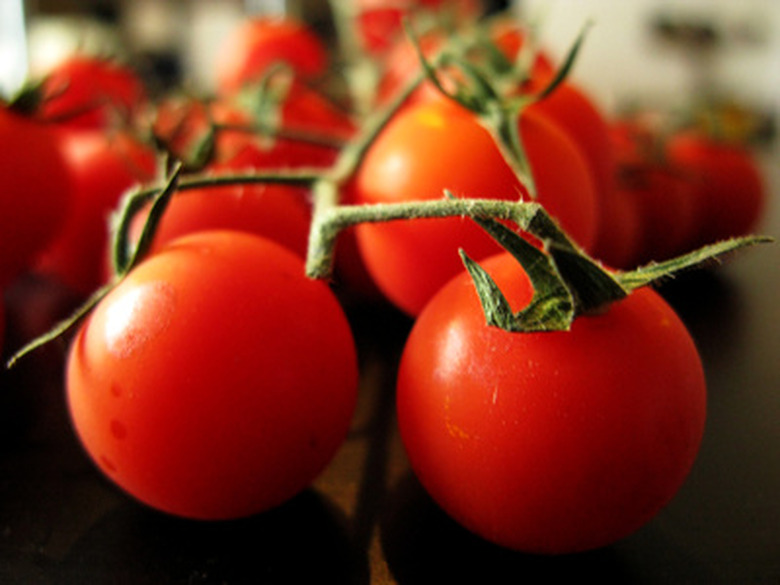Vegetables & Fruits That Do Best In Maryland's Growing Conditions
Home gardeners looking to grow their favorite foods in Maryland have good news: "Almost any annual vegetable crop can be grown in the Maryland climate," according to Ben Beale, agriculture extension educator in St. Mary's County. Marylanders can try anything except tropical plants. The list of edibles that will grow in this mid-Atlantic state, with good soils except in its far west, also includes small fruits, vegetables used in ethnic cuisines and heirloom varieties. Use standard growing practices.
Solanaceous Family
Tomato, eggplant, peppers and potatoes do well in Maryland. The tomato is Maryland's most commonly grown vegetable, according to the Maryland Coooperative Extension. After initial fruiting in July, high temperatures at night in August may briefly delay blossom sets, but usually the plants rally for a smaller harvest at the end of the month and continue in the fall until frost. These tender annuals, including eggplant and peppers, can usually be set outside around May 10, when the soil and air warms. Water plants heavily and regularly in Maryland but avoid getting drops on the leaves, which can cause blight. Avoid blossom-end rot by consistent watering and liming the soil before transplanting young plants and periodic top-dressing. Recommended peppers include Emerald Giant, Jupiter and Valencia; recommended tomatoes are Better Boy, Early Girl, Supersonic and others.
- Home gardeners looking to grow their favorite foods in Maryland have good news: "Almost any annual vegetable crop can be grown in the Maryland climate," according to Ben Beale, agriculture extension educator in St. Mary's County.
- These tender annuals, including eggplant and peppers, can usually be set outside around May 10, when the soil and air warms.
Cucurbit Family
Vine crops such as melons, squash, cucumbers, pumpkins and gourds often produce heavily in Maryland's humid summers. Set young squash plants out after May 1 and melon and cantaloupe after May 15. Recommended squashes include Burpee Hybrid and Yellow Crookneck, while the better cucumbers include Fanfare, Sweet Slice, Bush Pickle, Calypso and County Fair. Recommended watermelons include Sugar Baby, Crimson Sweet and Moon and Stars, and pumpkins include Baby Bear, Atlantic Giant and Spookie.
Small Fruits
The Maryland Cooperative Extension reports that growing conditions in the Free State are well suited to strawberries, grapes, currants, blackberries, grapes, blueberries and raspberries. Small fruit plants tend to live a long time. Purchase virus-free stock; Crusader and Consort are resistant blackberry cultivars, for example. Recommended strawberry varieties include Earliglow, Annapolis and Delmarvel. Set the plants out in mid to late September or early in the spring. Small fruits require a sunny location with deep soil that is well drained.
- Vine crops such as melons, squash, cucumbers, pumpkins and gourds often produce heavily in Maryland's humid summers.
- The Maryland Cooperative Extension reports that growing conditions in the Free State are well suited to strawberries, grapes, currants, blackberries, grapes, blueberries and raspberries.
